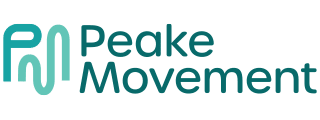Lymphedema is a chronic condition characterized by the abnormal accumulation of lymphatic fluid, leading to swelling, typically in the arms or legs. This occurs when the lymphatic system is damaged or blocked, impeding the normal flow of lymph fluid. Common causes include surgery, radiation therapy, infections, and certain genetic conditions. Symptoms of lymphedema can include swelling, discomfort, limited range of motion, and a feeling of heaviness or tightness in the affected limb. Managing lymphedema usually involves a combination of therapies such as compression garments, physical exercises, manual lymph drainage, and meticulous skin care to prevent complications. Early diagnosis and treatment are crucial in controlling the progression of this condition.

The Role of Assisted Stretching & Corrective Exercise
Undergoing an appropriate personal fitness program can play a crucial role in treating lymphedema by reducing swelling and improving the function of the affected limb. Core components for improving lymphedema include assisted stretching and corrective exercise, which help enhance lymphatic flow and decrease fluid buildup. Personal training coaches design tailored exercise programs that incorporate gentle, controlled movements to promote circulation and ensure the effective drainage of lymphatic fluid. Additionally, personal training coaches may employ techniques such as manual lymph drainage (MLD), a specialized form of massage that encourages the movement of lymph fluid. By integrating all these approaches, lymphedema symptoms can be dramatically improved, and patients will be empowered to maintain their health through regular activity and self-management strategies.
The Role of Compression Therapy
Compression therapy plays a vital role in treating lymphedema by helping to reduce swelling and prevent further fluid accumulation. It involves using specially designed garments or bandages that apply pressure to the affected limb, thereby promoting the movement of lymph fluid towards areas where it can be adequately drained. This pressure also helps improve the skin’s elasticity, minimize discomfort, and enhance mobility. By maintaining consistent compression, the therapy supports the overall management of lymphedema, slowing its progression and lowering the risk of skin infections. Compression therapy should be tailored to an individual’s specific needs and is most effective when combined with other treatments, such as exercise and manual lymph drainage, under healthcare professionals’ guidance.
Reference: Lymphatic Education & Research Network
